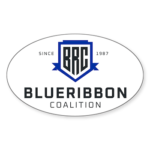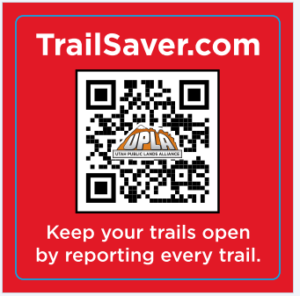If you remember back in early 2023, we launched a campaign to take action on a Land Exchange proposed between BLM and the Washington County Water Control District (the District) that would have affected trails on the West Rim section of Sand Mountain and the Washington Dam Staging and Camping area.
OHV community leaders from Desert Roads and Trails Society, BlueRibbon Coalition, Trail Hero, Casey’s Offroad Recovery, Tri State ATV Club, and Utah Public Lands Alliance had already been engaged for several months, but we knew we needed widespread support from the community.
Matt’s Offroad Recovery and Trail Hero launched wide reaching campaigns to inform our community and were supported by countless other groups to encourage the public to show up at a BLM Public Meeting scheduled in just 4 days. You responded to our pleas, and on a rainy Tuesday night, 620 of you showed up at the St George Public Library. The crowd was overflowing, and many of you stood outside in the rain waiting to get in. TV and news crews showed up to cover the meeting and the massive turnout. This outpouring of support set the stage for how serious you were in protecting Sand Mountain, and strongly aided the efforts by leaders to negotiate effectively with not only BLM, but the Washington County Water Conservancy District (the District), City of Washington, and the City of Hurricane.
Early on, we got a commitment from BLM that whatever agreements we made with the District would be incorporated into the EA. After several weeks of negotiation, the District’s Board unanimously voted to adopt a Resolution documenting our agreements.
Last Friday, BLM issued its Draft Environmental Assessment (EA) on the Exchange. There were 1116 comments received from the public that clearly demonstrated the concern for protecting that area, with 30 of those comments being deemed substantive. I am glad to report that the EA addressed nearly all of the areas we brought up in our comments. At the end of this article are links to all the referenced documents in case you’d like to review them now.
Yesterday, the same OHV leaders met again with the District to finalize some additional details we would like included in their resolution. The reception to the suggestions was warm, and a followup meeting scheduled in 2 weeks to review their conclusions.
The project is not over, and this is where we need your help again. The Draft EA is merely a document that outlines BLM’s assessment of all the factors surrounding the Exchange. We need the community to once again get engaged in submitting comments on the EA before December 16th to be considered before BLM releases their Final Decision.
As mentioned earlier, there were 1116 comments submitted during the Scoping period which clearly demonstrated the degree of concern, but only 30 of them were deemed substantive. We may not like the “Substantive” standard, but it is incorporated into Federal Law, CFR Title 40, Part 1503. For this comment period, we want it to be an exercise in submitting comments that meet the requirements of being “Substantive” under the law. Completing this exercise successfully will also pave the way for us to be more effective in future land management actions. Make sure that you are either a UPLA Member or Subscribe to ensure you get all the information on this important subject.
If you would like help getting your comments to be considered “Substantive”, send your comments to StopSandMountain@gmail.com and Rose, our Natural Resource Consultant will try to help you.
If you’re ready to submit your comments Visit this EPlanning Website
Attachments:
Washington County Water District Resolution and Map
Draft EA with Highlights on Significant Items
Abbreviated EA with Highlighted Section of Draft EA
Summary of Comments from Draft EA Appendix D
Comments Details-Complete Listing

